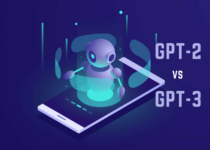Jurassic-1 Jumbo AI: Technical details
Think of a language model so powerful, it can write captivating poems, answer complex research questions, and even translate languages in real-time with stunning accuracy. This isn’t science fiction – it’s the reality of Jurassic-1 Jumbo, a behemoth in the LLM (Large Language Model) landscape. But what makes Jurassic-1 Jumbo tick? How does it achieve such impressive feats?
This blog post delves into the fascinating technical details that power Jurassic-1 Jumbo. We’ll crack open the hood and explore its architectural choices, the unique vocabulary that sets it apart, and the training methods that shaped its capabilities. We’ll see how Jurassic-1 Jumbo leverages its massive size for complex tasks while maintaining impressive efficiency through innovative approaches.
But this journey isn’t just about technical specifications. We’ll also discuss the challenges associated with training and running such a colossal LLM. Understanding these complexities is crucial for appreciating Jurassic-1 Jumbo’s achievements and its potential impact on the future of AI.
What is the size of Jurassic-1 Jumbo AI in parameters?
Jurassic-1 Jumbo AI boasts a staggering 178 billion parameters. This immense size places it among the largest publicly available LLMs (Large Language Models) currently available.
The number of parameters is a crucial metric for understanding an LLM’s capabilities. Simply put, parameters are essentially the adjustable knobs within the LLM’s neural network architecture. A higher number of parameters allows the LLM to learn more complex relationships between words and concepts, leading to:
- Deeper Understanding of Language Nuances: With more parameters, Jurassic-1 Jumbo can grasp subtle details of language, allowing it to generate more human-quality text and perform complex tasks with greater accuracy.
- Improved Ability to Handle Complex Tasks: The sheer number of parameters equips Jurassic-1 Jumbo to tackle intricate tasks like answering complex questions, summarizing information, or even translating languages with impressive fluency.
However, it’s important to note that parameter size isn’t the only factor. Other aspects like architecture and training data also play a crucial role in an LLM’s performance.
What type of architecture does Jurassic-1 Jumbo AI use?
Jurassic-1 Jumbo AI leverages a variant of the Transformer architecture, a state-of-the-art neural network architecture widely used in natural language processing tasks. Here’s a breakdown of the key components:
-
Encoder-Decoder Structure: The Transformer architecture utilizes an encoder-decoder structure. The encoder takes an input sequence (like a sentence or paragraph) and processes it, capturing the relationships between words and their meaning. The decoder then uses this encoded information to generate a new output sequence, like translating a sentence to another language or crafting creative text formats.
-
Self-Attention Mechanism: One of the key strengths of the Transformer architecture is the self-attention mechanism. This mechanism allows the model to focus not only on individual words in a sequence but also on the relationships between those words. This enables Jurassic-1 Jumbo to understand the context of a sentence and generate more nuanced and coherent outputs.
-
Modifications for Jurassic-1 Jumbo: While the core principles remain the same, the creators of Jurassic-1 Jumbo likely implemented specific modifications to the Transformer architecture to optimize it for their goals. These modifications could involve:
-
Depth vs. Width Trade-off: Compared to some Transformer-based LLMs, Jurassic-1 Jumbo might have a shallower architecture (fewer encoder/decoder layers) but a wider architecture (more units per layer). This trade-off could improve efficiency while maintaining learning capacity.
-
Specialized Layers: The creators might have incorporated specialized layers within the architecture to handle specific tasks like question answering or code generation more effectively.
-
The exact details of Jurassic-1 Jumbo’s architecture haven’t been publicly disclosed by its creators (AI21 Labs). However, understanding the core principles of the Transformer architecture and the potential modifications for Jurassic-1 Jumbo provides valuable insight into its inner workings.
How does Jurassic-1 Jumbo AI’s vocabulary work?
Jurassic-1 Jumbo AI’s vocabulary sets it apart from many other Large Language Models (LLMs) in a way that significantly impacts its capabilities. Here’s a deep dive into how its unique vocabulary approach works:
Beyond Individual Words: Multi-Word Tokens
Unlike traditional LLMs that rely solely on individual words as their building blocks, Jurassic-1 Jumbo boasts a vocabulary that incorporates multi-word tokens. These tokens encompass common phrases, expressions, and named entities.
Benefits of Multi-Word Tokens:
-
Capturing Complex Relationships: By including multi-word tokens, Jurassic-1 Jumbo can capture the nuances of language that go beyond the meaning of individual words. For example, the multi-word token “New York City” carries more meaning than just “New York” and “City” separately.
-
Improved Understanding of Context: Multi-word tokens allow Jurassic-1 Jumbo to understand the context of a sentence more effectively. The model can recognize how phrases are used together and how they influence the overall meaning.
-
Enhanced Efficiency: This unique vocabulary approach also offers an efficiency benefit. Jurassic-1 Jumbo can represent a given amount of text with fewer tokens compared to traditional LLMs that rely solely on individual words. This translates to faster processing and generation of outputs while maintaining high accuracy.
A Richer Tapestry of Language
Imagine the difference between a painting made with just primary colors and one that utilizes a full spectrum. Similarly, Jurassic-1 Jumbo’s vocabulary with multi-word tokens creates a richer tapestry of language understanding compared to LLMs limited to individual words. This allows for:
-
More Human-Quality Text Generation: By incorporating multi-word tokens, Jurassic-1 Jumbo can generate text that sounds more natural and fluent, mimicking the way humans use language with common phrases and expressions.
-
Tackling Complex Tasks with Greater Accuracy: Understanding the relationships within multi-word tokens empowers Jurassic-1 Jumbo to handle complex tasks like question answering or text summarization more accurately.
It’s important to remember that the specific details of Jurassic-1 Jumbo’s vocabulary, including the number and types of multi-word tokens included, haven’t been publicly disclosed by AI21 Labs. However, understanding this core concept provides valuable insight into how its vocabulary contributes to its impressive capabilities.
What are the computational requirements for running Jurassic-1 Jumbo AI?
Running Jurassic-1 Jumbo AI requires significant computational resources, making it a consideration for potential users. Here’s a breakdown of the key factors:
-
Massive Parameter Size: As mentioned earlier, Jurassic-1 Jumbo boasts a staggering 178 billion parameters. This sheer size translates into complex calculations, demanding significant processing power.
-
Hardware Needs: To handle these calculations, Jurassic-1 Jumbo likely requires powerful hardware like Graphics Processing Units (GPUs) or specialized AI accelerators. These are expensive resources not readily available to everyone.
-
High Energy Consumption: Running powerful hardware for extended periods leads to high energy consumption. This can be a concern for individual developers or businesses with limited resources.
Challenges and Potential Solutions:
The high computational requirements pose a challenge for accessibility. Here are some potential solutions:
-
Cloud-Based Access: AI21 Labs, the creators of Jurassic-1 Jumbo, might offer cloud-based access through their platform (AI21 Studio). This would allow users to leverage the platform’s infrastructure without needing their own powerful hardware.
-
Model Compression Techniques: Researchers are constantly developing techniques for compressing large language models while maintaining their capabilities. Implementing such techniques in future iterations of Jurassic-1 Jumbo could make it more accessible to users with less powerful hardware.
Who Can Run Jurassic-1 Jumbo?
Currently, running Jurassic-1 Jumbo might be more feasible for:
-
Large Organizations: Companies with access to powerful computing resources and the budget for cloud-based solutions can potentially leverage Jurassic-1 Jumbo for various applications.
-
Research Institutions: Universities and research labs often have access to high-performance computing clusters, making them suitable environments to run Jurassic-1 Jumbo and explore its potential in various research areas.
The Future of Accessibility
As LLM technology continues to evolve, we can expect advancements in model compression techniques and cloud-based access solutions. This could make powerful LLMs like Jurassic-1 Jumbo more accessible to a wider range of users in the future.
How is Jurassic-1 Jumbo AI trained?
The specific details of Jurassic-1 Jumbo AI’s training process haven’t been fully disclosed by AI21 Labs, the company behind its development. However, based on what we know about large language models (LLMs) in general, here’s a breakdown of the likely training approach:
-
Massive Dataset of Text and Code: Jurassic-1 Jumbo was likely trained on a colossal dataset of text and code. This dataset could encompass books, articles, code repositories, and internet crawls, providing the LLM with a vast amount of information to learn from.
-
Unsupervised Learning: LLMs like Jurassic-1 Jumbo often utilize unsupervised learning techniques. This means the model is exposed to the vast dataset without explicit instructions on what to learn. The model analyzes the patterns and relationships between words and code within the data to develop its understanding of language.
-
Focus on Masked Language Modeling: A popular technique for LLM training is masked language modeling. In this approach, the model is presented with text where some words are masked out. The model then tries to predict the missing words based on the surrounding context. This helps the LLM develop its ability to understand the relationships between words and generate coherent text.
-
Potential for Additional Techniques: Beyond masked language modeling, AI21 Labs might have incorporated other techniques during training. These could involve:
-
Question Answering Tasks: Training Jurassic-1 Jumbo on question answering tasks could improve its ability to understand complex questions and provide informative answers.
-
Text Summarization Tasks: Training exercises focused on text summarization could enhance Jurassic-1 Jumbo’s ability to condense lengthy information into key points.
-
-
Focus on Efficiency: Given the massive size of Jurassic-1 Jumbo, the training process likely involved techniques to optimize efficiency. This could involve:
-
Gradient Accumulation: This technique allows the model to accumulate gradients (information used to update parameters) over multiple batches of training data before updating the parameters. This can improve efficiency in training massive models.
-
Model Parallelism: Training Jurassic-1 Jumbo might have involved running the training process on multiple machines simultaneously, accelerating the overall training time.
-
While the specifics remain undisclosed, understanding these general training principles provides valuable insight into how Jurassic-1 Jumbo developed its impressive capabilities.


